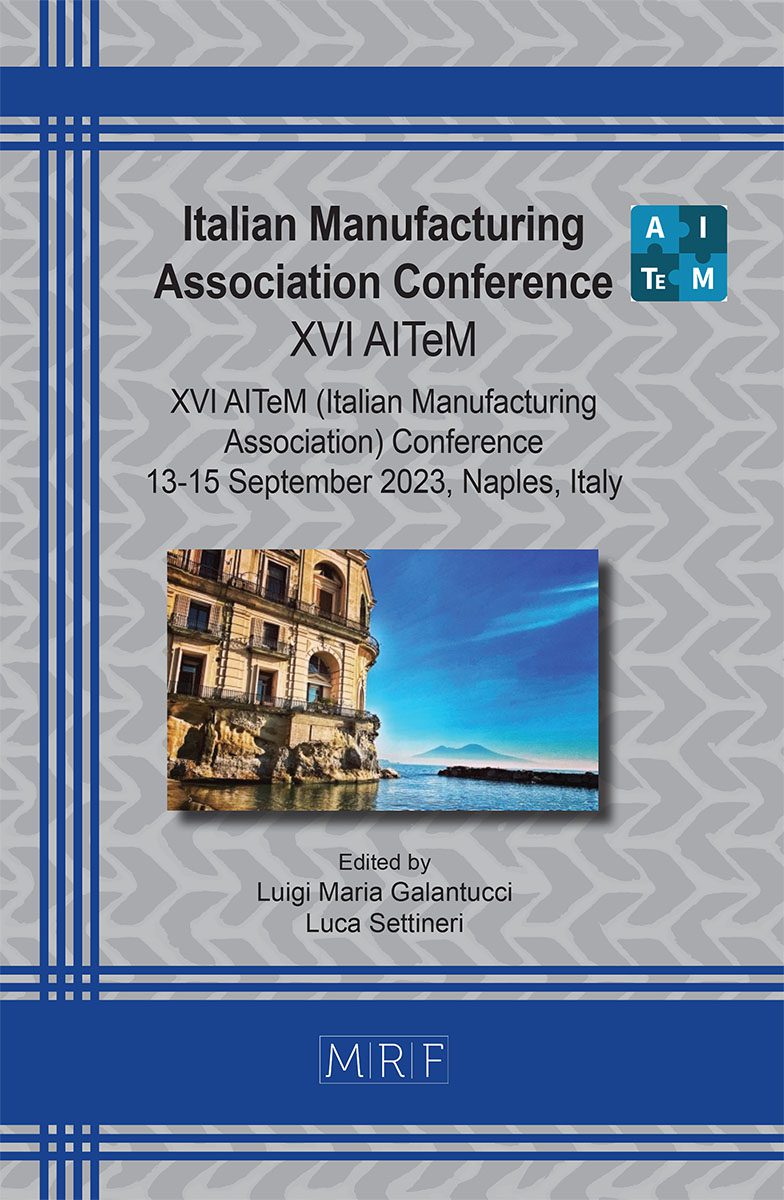Measurement and analysis of tooth movements during orthodontic treatment with clear aligners
Marino Calefati, Francesco De Palo, Maria Derosa, Ugo Marco Ferrulli, Andrea Verani, Giorgio Giustizieri, Eliana Di Gioia, Luigi Maria Galantucci
download PDFAbstract. This article aims to study, measure and verify through Reverse Engineering techniques and 3D analysis, the results obtained by an orthodontic treatment for the alignment of the teeth, using clear aligners (CA). A case study of a patient who followed orthodontic treatment using a set of 19 CA was analyzed: dental impressions by intraoral scanner were made before and after treatment; the study also analyzed the project planned by Invisalign ClinCheck® software, comparing it to the results clinically obtained, using specific software and hardware. The analysis of the obtained results shows that the measurements carried out are affected by a residual error respect to the final situation designed for the patient, caused by several factors here investigated; moreover, it is very determinant to do a correct diagnosis, to formulate an adequate treatment plan and to correct wear the chosen orthodontic appliances.
Keywords
Metrology & Tolerancing, Health Care, Medical Devices, Orthodontics
Published online 9/5/2023, 10 pages
Copyright © 2023 by the author(s)
Published under license by Materials Research Forum LLC., Millersville PA, USA
Citation: Marino Calefati, Francesco De Palo, Maria Derosa, Ugo Marco Ferrulli, Andrea Verani, Giorgio Giustizieri, Eliana Di Gioia, Luigi Maria Galantucci, Measurement and analysis of tooth movements during orthodontic treatment with clear aligners, Materials Research Proceedings, Vol. 35, pp 476-485, 2023
DOI: https://doi.org/10.21741/9781644902714-56
The article was published as article 56 of the book Italian Manufacturing Association Conference
![]() Content from this work may be used under the terms of the Creative Commons Attribution 3.0 license. Any further distribution of this work must maintain attribution to the author(s) and the title of the work, journal citation and DOI.
Content from this work may be used under the terms of the Creative Commons Attribution 3.0 license. Any further distribution of this work must maintain attribution to the author(s) and the title of the work, journal citation and DOI.
References
[1] R. Cozza, P., Pavoni, C., & Lione, Approccio sistematico alla terapia ortodontica con allineatori. Milano: Edra, 2020.
[2] V. D’Antò, R. Valletta, R. Ferretti, R. Bucci, R. Kirlis, and R. Rongo, “Predictability of Maxillary Molar Distalization and Derotation with Clear Aligners: A Prospective Study,” International journal of environmental research and public health, vol. 20, no. 4, 2023. https://doi.org/10.3390/ijerph20042941
[3] J. M. Smith, T. Weir, A. Kaang, and M. Farella, “Predictability of lower incisor tip using clear aligner therapy,” Progress in Orthodontics, vol. 23, no. 1, pp. 1–12, 2022. https://doi.org/10.1186/s40510-022-00433-4
[4] G. Rossini, S. Parrini, T. Castroflorio, A. Deregibus, and C. L. Debernardi, “Efficacy of clear aligners in controlling orthodontic tooth movement: A systematic review,” Angle Orthodontist, vol. 85, no. 5, pp. 881–889, 2015. https://doi.org/10.2319/061614-436.1
[5] R. Savignano, R. Valentino, A. V. Razionale, A. Michelotti, S. Barone, and V. D’Antò, “Biomechanical Effects of Different Auxiliary-Aligner Designs for the Extrusion of an Upper Central Incisor: A Finite Element Analysis,” Journal of Healthcare Engineering, vol. 2019, 2019. https://doi.org/10.1155/2019/9687127
[6] J. H. Seo et al., “Biomechanical Efficacy and Effectiveness of Orthodontic Treatment with Transparent Aligners in Mild Crowding Dentition—A Finite Element Analysis,” Materials, vol. 15, no. 9, 2022. https://doi.org/10.3390/ma15093118
[7] Y. Li et al., “Stress and movement trend of lower incisors with different IMPA intruded by clear aligner: a three-dimensional finite element analysis,” Progress in orthodontics, vol. 24, no. 1, p. 5, Dec. 2023. https://doi.org/10.1186/S40510-023-00454-7/FIGURES/9
[8] “Your digital Invisalign® experience.” https://www.invisalign.ca/invisalign-digital-experience (accessed Feb. 14, 2023).
[9] “POP 2 3D Scanner(Infrared Light丨Precision 0.05mm.” https://shop.revopoint3d.com/products/pop2-3d-scanner?variant=42265546653931#shopify-section-template–15966931878088__2f3f314d-a371-4465-a2d9-d2107bff12c2 (accessed Feb. 14, 2023).
[10] “Autodesk Meshmixer free software for making awesome stuff.” https://meshmixer.com/ (accessed Feb. 14, 2023).
[11] “GOM Inspect Pro Industry standard for 3D inspections and evaluations.” https://www.gom.com/en/products/zeiss-quality-suite/gom-inspect-pro (accessed Feb. 14, 2023).
[12] L. Lo russo, C. Ercoli, L. Guida, M. Merli, and L. Laino, “Surgical guides for dental implants: measurement of the accuracy using a freeware metrology software program,” Journal of Prosthodontic Research, 2022, doi: 10.2186/jpr.jpr_d_22_00069.
[13] “MATLAB – Matematica. Grafica. Programmazione.” https://it.mathworks.com/products/matlab.html (accessed Feb. 14, 2023).
[14] F. Kernen et al., “Accuracy of intraoral scans: An in vivo study of different scanning devices,” J Prosthet Dent, vol. 128, no. 6, pp. 1303–1309, 2022. https://doi.org/10.1016/j.prosdent.2021.03.007
[15] Jamie L. Somers, “Spostamenti dei denti.” https://support.clearcorrect.com/hc/it/articles/4402323236247-Spostamenti-dei-denti (accessed Feb. 14, 2023).
[16] “Crown Coordinate System.” https://www.onyxwiki.net/doku.php?id=en:crowncoordinatesystem (accessed Feb. 14, 2023).
[17] R. Tien et al., “The predictability of expansion with Invisalign: A retrospective cohort study,” American Journal of Orthodontics and Dentofacial Orthopedics, vol. 163, no. 1, pp. 47–53, 2023. https://doi.org/10.1016/j.ajodo.2021.07.032












